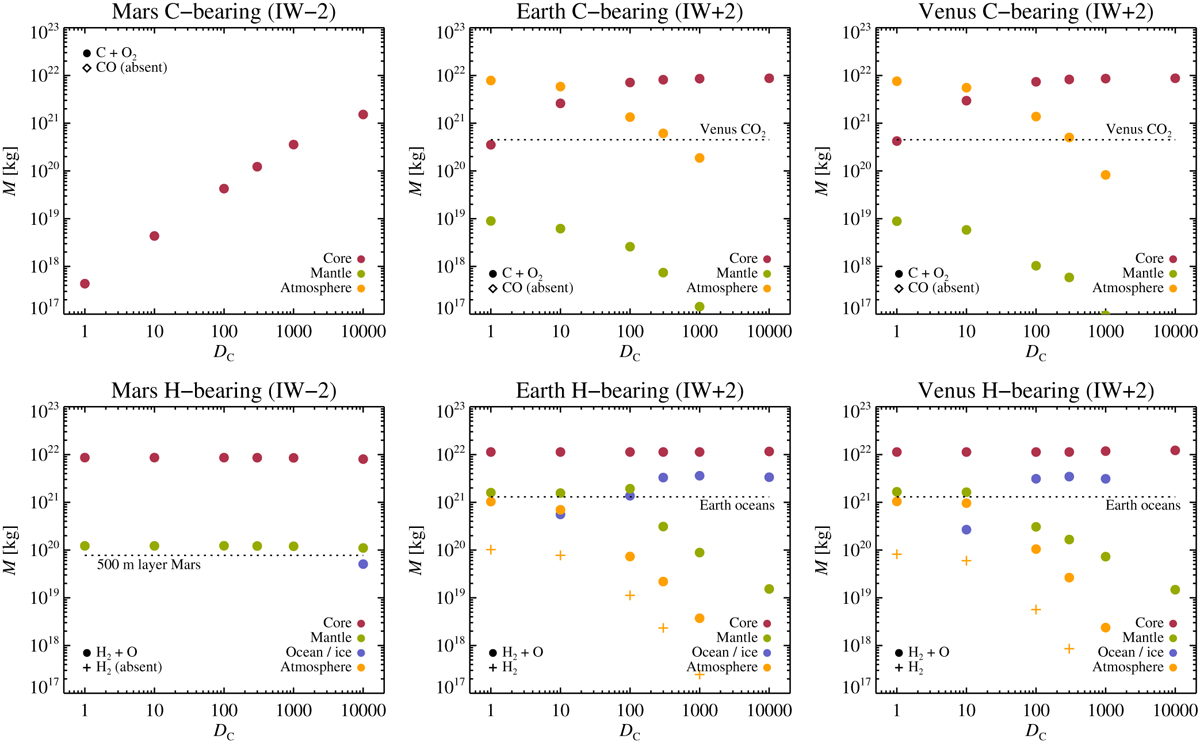Fig. 5

Download original image
Distribution of C-bearing (top) and H-bearing (bottom) volatiles between core, mantle, ocean, and atmosphere after 100 Myr of atmospheric evolution, as a function of the carbon partition coefficient DC between metal and silicate melt. Mars loses its entire atmospheric reservoirs due to atmospheric escape for all values of DC. The martian mantle nevertheless maintains a significant amount of H2 that can be released as water and reduced H2 by later volcanism or impacts and drive short-lived warming events. Some ice condenses out at the surface of Mars for the highest value of DC where most C is in the core and the atmosphere thus very cold. Earth and Venus experience only little atmospheric escape. Their atmospheric contents of CO2 match the current atmospheric contents of Venus best for a partition coefficient around DC = 300. Higher partition coefficients bury too much carbon in the core. A partition coefficient around our nominal choice of DC = 300 also gives a good match of the outgassed water mass of Earth and Venus to the modern Earth ocean mass.
Current usage metrics show cumulative count of Article Views (full-text article views including HTML views, PDF and ePub downloads, according to the available data) and Abstracts Views on Vision4Press platform.
Data correspond to usage on the plateform after 2015. The current usage metrics is available 48-96 hours after online publication and is updated daily on week days.
Initial download of the metrics may take a while.


